 Ryan Bani Tahmaseb is a learning coach, curriculum developer, and author. His debut picture book, Rostam’s Picture-Day Pusteen, was published by Charlesbridge in July 2024, and his first professional book for educators, The 21st Century School Library, was published in 2021 by John Catt Educational. His writing has also appeared in publications such as Education Week and the Carolina Quarterly. The following is a conversation between Ryan and ThinkGive Executive Director Penny Austen. This conversation has been lightly edited for clarity.
Ryan Bani Tahmaseb is a learning coach, curriculum developer, and author. His debut picture book, Rostam’s Picture-Day Pusteen, was published by Charlesbridge in July 2024, and his first professional book for educators, The 21st Century School Library, was published in 2021 by John Catt Educational. His writing has also appeared in publications such as Education Week and the Carolina Quarterly. The following is a conversation between Ryan and ThinkGive Executive Director Penny Austen. This conversation has been lightly edited for clarity.
Penny Austen: Ryan, it’s great to see you today. Thank you for joining us. First off, congratulations on your new book, Rostam’s Picture-Day Pusteen, which was published in July. That’s exciting!
Ryan Tahmaseb: Thank you!
Penny Austen: Can you tell us a little bit about the story? What’s Rostam’s Picture-Day Pusteen all about?
Ryan Tahmaseb: Of course! It’s about a young Iranian American boy who’s just started making friends at his new school in the U.S. He’s nervous about picture day because his parents insist he wear a pusteen, a traditional Persian vest, for his photo. He’s terrified it will make him lose his new friends, but instead, it sparks their curiosity. Instead of the judgment he expected, his classmates—like many young kids—respond with interest. The pusteen becomes the hit of the day, and he even has to make a list of who gets to wear it next!
Penny Austen: It’s just such a unique story. I love how it touches on cultural pride and how children handle differences. What inspired you to write this book?
Ryan Tahmaseb: It’s based on an experience my dad had as a kid. The story is fictionalized but rooted in the reality of a similar situation he faced. Like Rostam’s Maman and Baba, my dad’s parents insisted he wear a pusteen to school for picture day, and just like in the book, it became the most exciting part of the day for him and his classmates. My dad told me this story about ten years ago when I interviewed him for a class project at the Bread Loaf School of English at Middlebury College. Our professor encouraged us to interview a family member for writing inspiration, and my dad’s story really stuck with me. I thought it could make a great children’s book, but I had never written anything for kids. So, I tucked the idea away for five to seven years until, one day, I decided to give it a try.
Penny Austen: How old was your father when the story happened?
Ryan Tahmaseb: He was a little older than the protagonist in the book. I think he was in 4th or 5th grade. In the book, Rostam is in 1st grade.
Penny Austen: Did your dad distinctly remember the feelings of trepidation going into that? Or did he remember the outcome more?
Ryan Tahmaseb: He mentioned both. What stood out to me was how he expected it to be a disaster, but it turned into a celebration. That shift felt like a complete story in itself. I knew then that I had to put it into words someday.
Penny Austen: Can you share a little bit about your writing process? What challenges did you face when creating this book, and how did you overcome them?
Ryan Tahmaseb: Oh, my goodness, so many challenges! As I mentioned, I hadn’t written for children before. I had written articles for adults and started drafting my first book for educators, but writing for children was unexplored territory. As I quickly learned, picture book writing is a uniquely challenging form. As the author, you have to leave room for the illustrator to co-create the story, so the language needs to be specific yet open. Another challenge is that picture books typically have around 500 words, which isn’t a lot of space to craft a complete story with rising action, a climax, and a satisfying conclusion. Balancing the word limit while allowing room for the illustrator was challenging. It took time to figure out how to write in that way. I worked with a professional editor with experience writing children’s books and joined critique groups with other children’s writers. Over about two years, I refined it to the point where it was ready to submit to agents and editors.
Penny Austen: From what I understand, the illustrator usually starts their work after the manuscript is finished. When you see the artwork, do you ever feel the illustrations convey part of the story? If so, do you go back and remove any redundant words? Does how readers interact with the text and images affect your revisions?
Ryan Tahmaseb: That does happen. In the picture book manuscripts I’ve written since, I’ve used illustrator notes more, offering suggestions that aren’t too specific unless something is unclear from the text. It’s always a balancing act—the illustrator is responsible for telling about 50% of the story. Once the manuscript is sold, the editor usually selects the illustrator, and while you have a voice in the process, it’s not the final say. In this case, the illustrator Fateme Mokhles did a wonderful job bringing Rostam, his friends, classmates, and parents to life. For example, there’s an illustration of Rostam’s mom holding her phone with a text in Farsi, which wasn’t something I suggested but was a brilliant addition on her part.
Penny Austen: This book tackles big themes—embracing your cultural heritage, finding bravery, and realizing we often make incorrect assumptions about how others will react. What techniques did you use to make these complex ideas accessible to a young audience?
Ryan Tahmaseb: Part of it involves refining the language to ensure it’s appropriate for kids without talking down to them. Many picture books, of course, are intentionally instructive or didactic. However, the best ones let the themes emerge naturally through a true story without an agenda. The plot needs to be solid for those themes to come through effectively. Writers have many ideas, but only a few become books. The story’s core has to be strong enough for those bigger themes to shine through.
Penny Austen: Empathy is a central theme in your book and a key outcome of ThinkGive programming. How do you envision your story nurturing empathy in young readers?
Ryan Tahmaseb: When kids see another child struggling, they instinctively identify with that because they’ve experienced feeling upset or scared. This book isn’t just about the pusteen; it’s about a kid who is scared and nervous about sharing a part of himself with his classmates. That’s where the empathy arises, as kids can relate to those emotions.
Penny Austen: What feedback have you received from parents and educators regarding the story’s reception?
Ryan Tahmaseb: I had my first virtual school visit yesterday with kindergarteners, first graders, and second graders in California. It was so lovely to see the kids excited about the book. I can tell they’re engaged when they’re quiet. Librarians and teachers have shared their appreciation for the themes you’ve mentioned. As a former classroom teacher and school librarian, I knew I wanted to pursue this book idea because these themes are important for discussion in schools and libraries.
Penny Austen: Did you have any surprising or funny questions from the students yesterday?
Ryan Tahmaseb: I gave a brief “fun facts about me” presentation beforehand, and most questions were more about that than the book itself. The first question I received was hilarious. I shared a picture of our two kids, who are 5 and 7 years old—the same ages as the students I was meeting with. One of the questions was, “Why do you have two kids?” It was just the cutest thing! Along with questions like that, I also got asked, “How long does it take to write a book?” I shared that it took about ten years from the initial idea to publication.
Penny Austen: That’s longer than they’re old.
Ryan Tahmaseb: The girl’s jaw dropped when I mentioned that. I also shared that I have a middle-grade book coming out next year, and the timeline from when I started working on it to its publication is about two years, so it can be a lot shorter. I think that made her feel a bit better.
Penny Austen: How can parents use this book to facilitate meaningful discussions with their children about diversity, acceptance, and belonging during reading time?
Ryan Tahmaseb: I would start by asking your child to imagine what they would say or do if they were one of Rostam’s classmates or his sibling. For example, you could say, “Imagine you’re Rostam’s sibling and see him feeling nervous about wearing the pusteen for picture day. What could you say to make him feel better?” Questions like these encourage children to empathize with the characters in the story. After reading, it’s also helpful to ask what the story meant to them. You might ask, “What did you think about the book? What did you think about Rostam? What did you think about his classmates?” Once they share their thoughts, follow up with “why” or “how” questions to encourage deeper reflection.
Penny Austen: What I love most about this story is its hopeful message. Readers might expect Rostam to encounter stereotypical reactions from his peers regarding his pusteen, but he experiences something entirely different. He’s also at a stage where he’s forming his identity, which brings its own social pressures. The story offers valuable lessons about how children can react in various ways. Did you ever consider changing the outcome, or did you want to remain true to your father’s authentic experience?
Ryan Tahmaseb: Some early feedback I received suggested there wasn’t enough tension, leading me to wonder if I should include more initial negative reactions. After drafting what I felt was a solid manuscript, I grappled with another common expectation in children’s literature: the idea that a character should instigate their own change. Many stories benefit from this approach, as it empowers children to see how they can make a difference. Striking a balance was crucial; I wanted to show that Rostam creates positive change by being brave and open rather than shutting down. It’s also important to highlight that his classmates’ positive responses significantly affect how events unfold. So, it’s really about both elements.
Penny Austen: How can educators and community organizations, like ThinkGive, effectively leverage this book to enhance social and emotional learning among youth?
Ryan Tahmaseb: It’s about reading the book and gently guiding kids to unpack the ideas. You don’t need an agenda, per se, or set guiding questions. That will all come if you give kids space to talk and reflect on the story after they’ve read it. Start with their reactions and questions about the plot, then delve into how and why inquiries. This approach often leads to a magical moment where one student’s insight sparks another’s, fostering connections and deeper understanding. That magic happens when a story resonates with kids, and a safe space is created for conversation.
Penny Austen: Looking ahead, can you share what you’re currently working on? Are your new projects exploring similar themes, or are you taking a different direction?
Ryan Tahmaseb: I have a picture book that will be coming out in 2 or 3 years about an impulsive monster who wants to eat an impulsive boy. So that’s quite a different story! I also have a middle-grade book about Persian mythology coming out late next fall that I’m excited about. It’s action-packed and aimed at older kids. As a librarian, I noticed how popular mythology is with kids, especially with series like Percy Jackson, and I realized that Persian mythology is largely untapped. Persians are natural storytellers, and I wanted to showcase that richness to middle-grade readers.
Penny Austen: Wonderful. Well, thank you!
Check out Reading Rostam’s Picture-Day Pusteen With Your Child, an SEL Resource for Parents and Guardians designed to inspire meaningful conversations about cultural pride, acceptance, and bravery between parents/guardians and their children.



